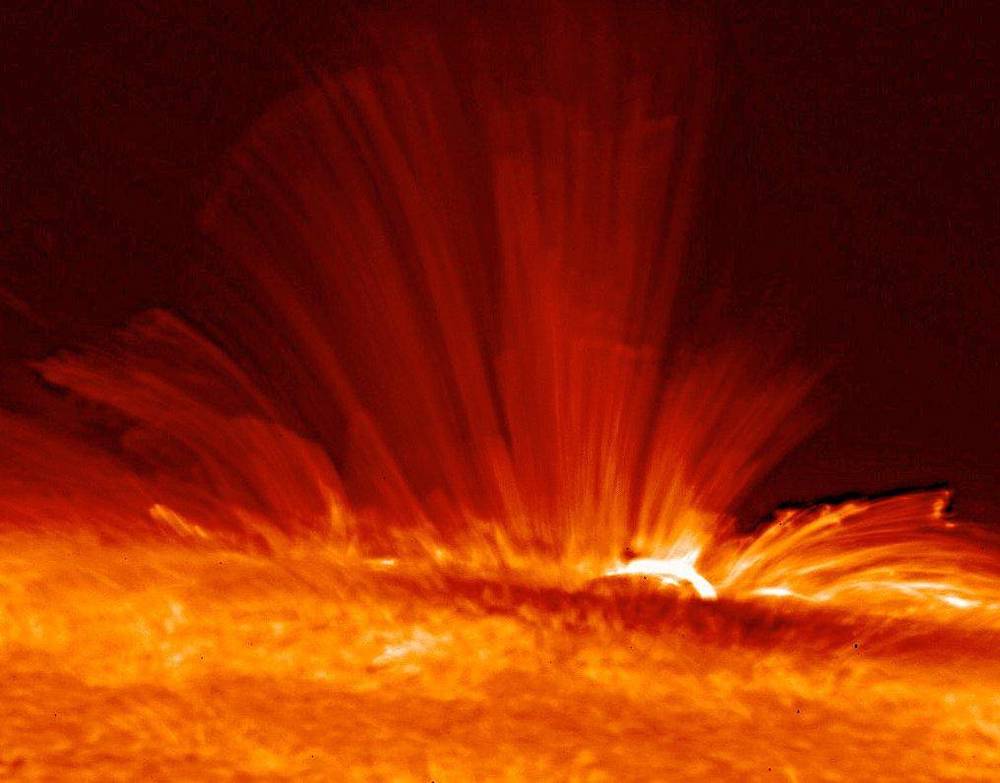Create a free profile to get unlimited access to exclusive videos, sweepstakes, and more!
Zombie sunspot reanimated out of nowhere and went into full attack mode
The undead lurk in space, too.

Maybe sunspots look dead, but these deceptively shadowed regions of our star are really closer to the zombies in Day of the Dead that you only thought were dead (again) until they clawed their way to their decaying feet and shambled after the humans.
Sunspots really are the undead nothing can kill. When supposedly lifeless sunspot AR12897* reanimated, it spewed so much radiation that the phenomenon triggered a coronal mass ejection, sending gobs of plasma into the void and towards Earth. If charged particles from solar explosions crash into particles in our planet’s magnetosphere, they can set off spectacular auroras. Events like this have powered auroras as far south as New York City.
Solar scientists Giuliana de Toma of UCAR and Lucia Kleint of the University of Geneva may have not directly observed this thing rising from the dead, but they have seen many monsters like it. This was a C-class flare. These are more dangerous than relatively low-energy A-class flares but still vomit out about a hundred times less energy than the dreaded X-class flares that can really unleash havoc. X-class flares are the most intense, but never underestimate the Sun.
“Flares and coronal mass ejections are manifestations of a loss of equilibrium at the Sun,” de Toma told SYFY WIRE. “Then, a large amount of energy and plasma can be released to form a magnetic cloud that, if properly directed, can hit the Earth and trigger a geomagnetic storm.”
This is what happens when there is magnetic turmoil in the guts of the Sun. While sunspots can last anywhere from just hours to a few months, they never really die, because they are broken apart by convection happening inside a star and leave seemingly dead areas behind on the surface. Stressed lumps of plasma and magnetic fields above the sunspot will eventually rupture out into space. What looks like it breathed its last is still in magnetic turmoil — a zombie that was only taken down for a while but still managed to eat enough brains to revive itself.
Most flares at energy levels close to AR12897 are not strong enough to be catalysts for coronal mass ejections. However, just like rotting zombies can unexpectedly find that last ounce of strength, even C-class flares can sometimes wake the beast. Some magnetic fields will reconnect, but they can leave behind tangles of broken fields that release an unreal amount of energy that aggravates a solar flare. As if that burst of plasma wasn’t enough, if the strength is there, more can then be released in a coronal mass ejection.
“The frequency of flares follows the solar cycle, maximum they are more likely to happen at maximum, but large flares can happen at almost any time,” said de Toma. The Sun can unleash a huge flare during the rising phase of the cycle (where we are now) or the declining phase.”
Solar flares (whether they emerge from zombified sunspots or not) don’t always lead to coronal mass ejections, but when they do, Earth is at risk for massive disruptions to satellites, electricity, and internet, and things in the sky can get weird. The solar cycle automatically resets every eleven years and starts with a weak magnetic field. As the Sun rotates, with its equator rotating faster than its poles, it stretches magnetic field lines that end up tangled or broken, and this is when everything from sunspots to flares, prominences and outbursts of plasma can happen.
Though no visible auroras were seen in NYC this time around, it has happened before. There was a geomagnetic storm like no other in 1859. There was a collective gasp from New Yorkers that made headlines in The New York Times. As the Times reported back then, “Auora appeared, illuminating the city so brightly as to draw crowds to the streets.” If you live where auroras are more likely to be visible, you can check out when and where they occur here. Get ready for upcoming light shows, because the peak of the solar cycle approaches in 2025.
“We expect many more sunspots and with that also more solar storms,” Kleint told SYFY WIRE. “However, it currently unfortunately is not possible to predict when the next solar storm may occur or what strength it may have.”
Technological advances in the future could let us predict these events earlier and possibly hype up crowds. Imagine something outshining the lights of the city that never sleeps.
*Also referred to as AR2897 around the internet, but AR numbers always have 5 digits.


























